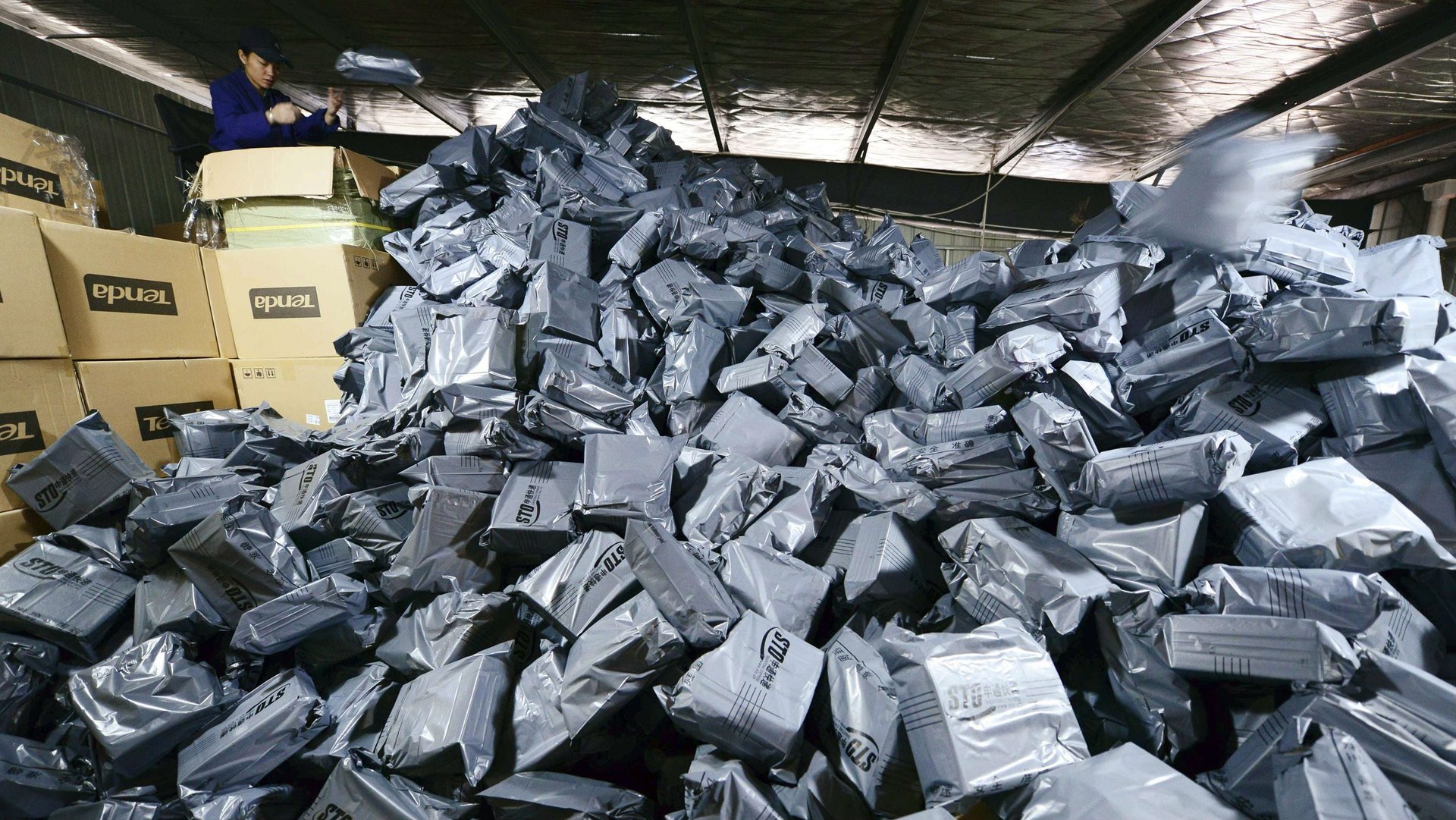Chinese government study based on shoddy data claims 40% of China’s online products are shoddy
A report delivered to China’s lawmakers on Monday (Nov. 2) said only 58.7% of the products bought and sold on the Chinese internet were genuine or of good quality last year. It has been widely picked up by Chinese and Western media, as the latest indication that China’s fast-growing e-commerce industry is a wild, unregulated market.


A report delivered to China’s lawmakers on Monday (Nov. 2) said only 58.7% of the products bought and sold on the Chinese internet were genuine or of good quality last year. It has been widely picked up by Chinese and Western media, as the latest indication that China’s fast-growing e-commerce industry is a wild, unregulated market.
But the report (in Chinese), delivered by Yan Jiuqi, vice chairwoman of the standing committee of the National People’s Congress, China’s top law-making body, is based on a laughably small survey, and one that sparked a public, politically charged fight between the nation’s largest e-commerce company and state regulators.
(To be clear—we have no doubt that there are fake or poor quality products for sale on China’s internet. But this 40% figure should be shelved until someone does a proper survey of the $200 billion in annual retail sales industry).
As Yan writes, the “58.7%” genuine or good quality rate comes from a 2014 survey done by China’s top business regulator, the State Administration for Industry and Commerce (SAIC). SAIC published its “spot check” report (in Chinese) on its website in January.
The SAIC spot check examined just 92 online products from August of last year to October, and found out 54 items of those were genuine or of good quality— the 58.7% for genuine goods, and 41.3% for counterfeit figure that is being widely reported.
The online products examined by SAIC cover six categories: smart phones, toys, auto parts, clothing, makeups, and fertilizers. The regulator didn’t explain why it choose those six categories, but it did explain that each brand selected in the spot check was a “high-profile” or “foreign” brand. Here is a Quartz graph of their smart phone industry spot check.
We are not kidding. We didn’t leave anything out. The SAIC looked at exactly seven phones to conclude that only 28.57% of the smartphones sold on China’s internet were genuine or of good quality. While it inspected just two smart phone brands, it checked three toy brands, including Lego, and five cosmetic brands including Estee Lauder.
The SAIC also gave this breakdown of the items it purchased on online shopping websites in the survey:
The spot check involved 51 products on Taobao, Alibaba’s biggest shopping site, which got a genuine or good rate of 37.25%, the lowest among the seven websites. It selected 20 items on JD.com, Alibaba’s biggest rival, which got a genuine or good rate as high as 90%.
The SAIC report was actually the start of a fight between Alibaba and the Chinese regulators in January. At the time, Alibaba published an open letter on Taobao’s Sina Weibo account, accusing SAIC chief Liu Hongliang of “crossing the line.” ”It’s easy to ruin [the reputation of] Taobao,” the letter, attributed to an anonymous employee, said, “but please don’t ruin the spirit of private entrepreneurs simply because [you are angry with] Taobao.”
Yan’s report to lawmakers this week was part of a progress report about the Law on the Protection of the Rights and Interests of Consumers, which was passed in March of 2014. In her report, Yan said commerce authorities across the country received 77,800 complaints about online orders last year, a 356.6% increase year-over-year.
There’s little doubt that China’s internet shopping industry could use more regulation. But declaring 40% of it a fraud, based on a shoddy survey, isn’t the best way to protect consumers.